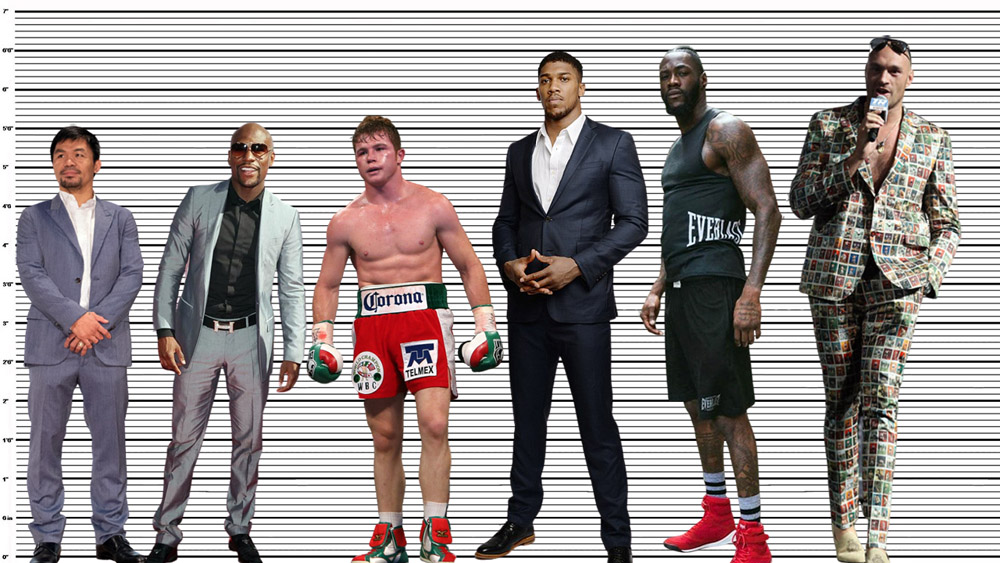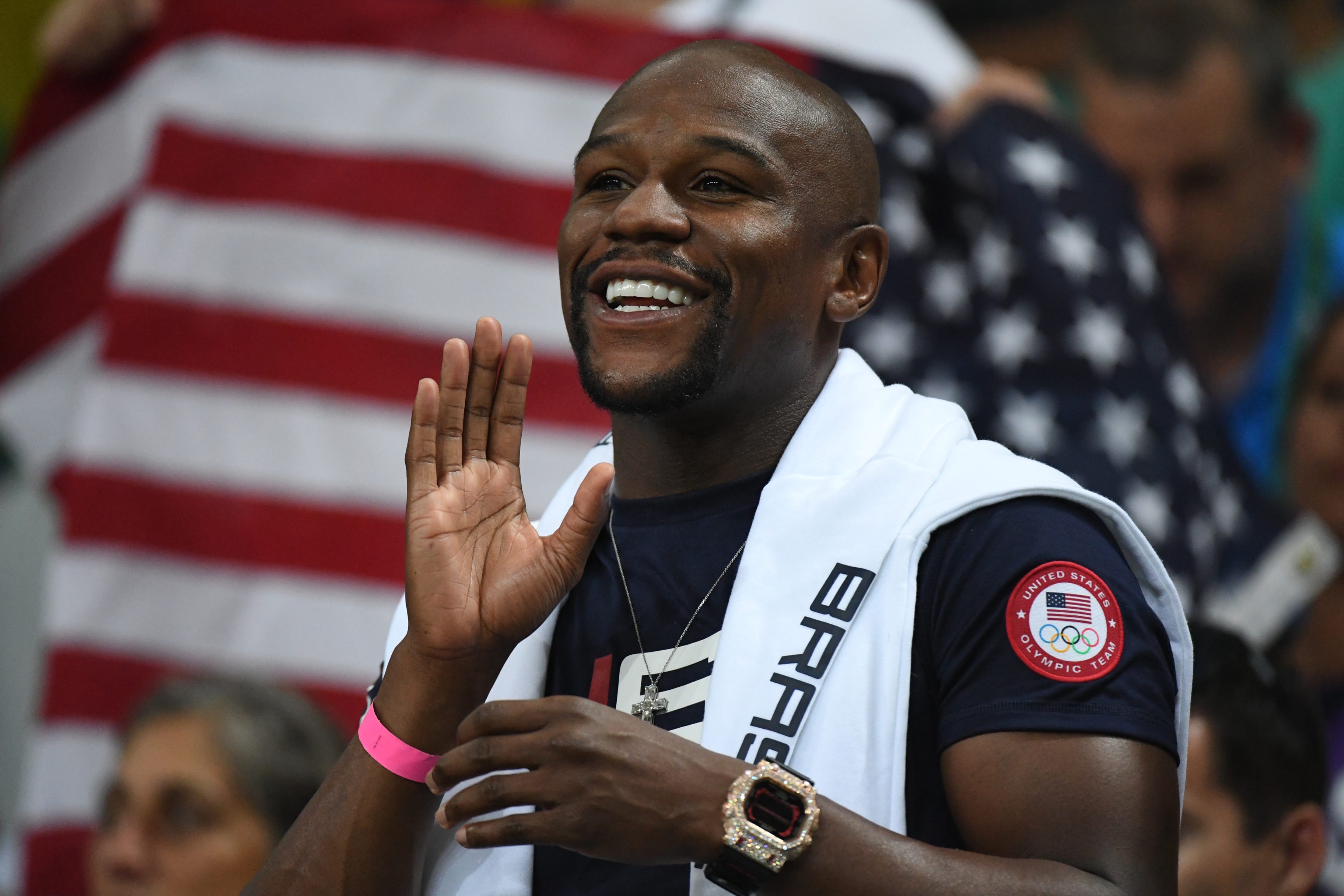Could the key to Floyd Mayweather Jr.'s unprecedented boxing reign be something as seemingly simple as his stature? The common perception often overlooks the subtle, yet significant, influence of height in the sweet science, but in Mayweather's case, it was a strategic advantage that helped define an era of dominance.
The narrative surrounding Floyd Mayweather Jr. is often one of unparalleled technical skill, defensive brilliance, and an almost preternatural ability to read opponents. While these attributes are undeniably true, they are often discussed in isolation, failing to fully appreciate the synergistic effect of his physical dimensions. Mayweather's height, while not towering by conventional standards, occupied a crucial position within the welterweight and junior middleweight divisions, allowing him to leverage angles, manage distance, and dictate the tempo of his bouts with remarkable effectiveness. This subtle advantage, consistently deployed throughout his career, provided the foundation upon which his legendary status was built.
| Full Name: | Floyd Joy Mayweather Jr. |
| Born: | February 24, 1977, Grand Rapids, Michigan, USA |
| Nickname(s): | "Money," "Pretty Boy" |
| Height: | 5 ft 8 in (173 cm) |
| Weight: | Typically between 147 lbs (Welterweight) and 154 lbs (Junior Middleweight) |
| Reach: | 72 in (183 cm) |
| Stance: | Orthodox |
| Total Fights: | 50 |
| Wins: | 50 |
| Wins by KO: | 27 |
| Losses: | 0 |
| Draws: | 0 |
| Titles Held: | Five-division world champion (Super Featherweight, Lightweight, Light Welterweight, Welterweight, Super Welterweight) |
| Notable Opponents: | Oscar De La Hoya, Ricky Hatton, Juan Manuel Mrquez, Shane Mosley, Miguel Cotto, Canelo lvarez, Manny Pacquiao, Conor McGregor |
| Retirement: | 2017 (Professional Boxing) |
| Training: | Mayweather Sr. (Father and Trainer), Roger Mayweather (Uncle and Trainer) |
| Style: | Defensive, Counter-punching, Precision |
| Record: | 50-0-0 |
| Reference: | BoxRec - Floyd Mayweather Jr. |
Floyd Mayweather Jr.'s boxing journey began in Grand Rapids, Michigan, a city that would become synonymous with his rise to pugilistic stardom. Born into a family steeped in the fight game, with his father, Floyd Mayweather Sr., and uncle, Roger Mayweather, both accomplished boxers, Mayweather Jr. was immersed in the sport from a young age. This early exposure provided him with a unique understanding of the nuances of boxing, fostering an innate ability to read opponents, anticipate movements, and develop a defensive style that would become the hallmark of his career.
His amateur career, though less extensively documented than his professional exploits, laid the groundwork for the future champion. He honed his skills, learning to navigate the intricacies of the ring, developing his footwork, and refining his defensive techniques. This period was crucial in shaping the defensive brilliance that would later baffle and frustrate countless opponents. While he didn't participate in the Olympics, the experience of amateur competition provided a valuable foundation.
The transition to the professional ranks was swift and seamless. Mayweather Jr. made his professional debut in 1996, quickly establishing himself as a force to be reckoned with. Early in his career, he competed in the super featherweight division, gradually moving up in weight to conquer the lightweight, light welterweight, welterweight, and super welterweight divisions. This multi-divisional dominance showcased not only his technical proficiency but also his adaptability and strategic acumen. Each weight class presented different challenges, yet Mayweather consistently found ways to overcome them, often outmaneuvering opponents who possessed significant size advantages.
His ascent wasn't merely a consequence of his skills; the choices he made, particularly regarding his opponents, played a pivotal role. The selection of certain adversaries, and the timing of those bouts, often revealed a strategic brilliance. Mayweather understood the importance of matchups, and he carefully selected opponents whose styles played into his strengths. This tactical approach, combined with his defensive mastery, became a winning formula, enabling him to extend his career and remain undefeated for two decades. The calculated nature of these choices was as crucial as his physical and technical abilities.
One of the most fascinating aspects of Mayweathers success is the often-overlooked role of his height. While not exceptionally tall, at 58, his height was ideal for his chosen style. It allowed him to effectively utilize his reach, which, at 72 inches, provided a significant advantage in many of his fights. This reach allowed him to dictate the distance, keeping opponents at bay and controlling the pace of the fight. He could jab and control the range effectively, making it difficult for opponents to mount a sustained offensive. This subtle advantage in the welterweight division proved critical.
Mayweather's height also played a crucial role in his defensive prowess. His ability to slip punches and evade incoming attacks was enhanced by his physical dimensions. He could bend and move his upper body with precision, making it difficult for opponents to land clean shots. His height gave him a favorable center of gravity, allowing for quick movements and effective counter-punching. This made him a frustrating opponent, difficult to hit and even more challenging to hurt.
Mayweather's exceptional hand speed, another defining trait, was also intricately linked to his physical characteristics. His height, combined with his lightning-fast reflexes, allowed him to launch quick, accurate counter-punches, capitalizing on the openings created by his opponents. This combination of speed, height, and reach made him a formidable threat in the ring.
The defensive strategy employed by Mayweather, often described as a shoulder roll technique, perfectly complemented his height and reach. This defensive maneuver, executed with remarkable precision, involved using his shoulder to deflect punches while simultaneously creating opportunities for counter-attacks. This technique was particularly effective against taller opponents, as it allowed him to neutralize their reach advantage and dictate the terms of the fight. Mayweather refined this technique to a level of artistry, frustrating even the most aggressive fighters.
Mayweather's success wasn't solely attributable to his physical advantages; it was also a product of his exceptional mental fortitude. He possessed an unwavering focus, an ability to remain calm under pressure, and a deep understanding of the psychological aspects of the sport. He was a master of mind games, often using trash talk and psychological warfare to gain a mental edge over his opponents. This mental toughness, combined with his physical attributes, created a formidable force.
Consider the multitude of his iconic fights. Against Oscar De La Hoya, a larger, more experienced opponent, Mayweather's defensive brilliance, coupled with his accurate punching, proved to be the difference. He neutralized De La Hoya's size advantage by controlling the distance and peppering him with precise shots. Against Ricky Hatton, known for his aggressive, come-forward style, Mayweather's height and reach again played a pivotal role, enabling him to evade Hatton's attacks and land devastating counter-punches. The fight against Juan Manuel Mrquez, a skilled counter-puncher, showcased Mayweather's ability to adjust his tactics, nullifying Mrquez's strengths and securing a convincing victory. The clash against Miguel Cotto, a strong, rugged champion, saw Mayweather use his superior footwork and defensive skills to frustrate Cotto and secure another win.
His bout against Canelo lvarez, a younger, stronger opponent, once again demonstrated Mayweather's ability to outmaneuver and outthink his adversary. He used his jab to control the distance, nullifying lvarez's power and preventing him from landing significant shots. Even his fight against Manny Pacquiao, a highly anticipated and much-discussed encounter, was a testament to Mayweathers superior skill set. He effectively neutralized Pacquiao's speed and aggression by controlling the distance and employing his defensive prowess. The victory was decisive, further solidifying his legacy.
The much-hyped boxing match against Conor McGregor, a mixed martial arts superstar making his boxing debut, proved to be another lucrative and significant event. Despite his size disadvantage, McGregor, known for his striking ability, posed a unique challenge. However, Mayweather's experience, skill, and strategic approach ultimately prevailed. He absorbed McGregor's early aggression and eventually wore him down, securing a TKO victory. This event showcased Mayweather's ability to adapt to different styles and rise to the occasion, cementing his place as one of the highest-paid athletes in history.
The cultural impact of Mayweather extends far beyond the boxing ring. He became a global icon, a symbol of success, and a cultural phenomenon. His flamboyant lifestyle, his entrepreneurial ventures, and his ability to create narratives around his fights helped elevate boxing to new heights. He became a master marketer, using social media and other platforms to promote himself and his brand. His influence transcended the sport, making him a household name and a global celebrity. The Money persona he cultivated, reflected not only his financial success but also his relentless drive and self-belief.
However, the narrative of Mayweather's career isn't without its critics. Some have argued that his defensive style, while effective, made for less exciting fights. The focus on safety and control was sometimes perceived as lacking in the dynamism and aggression that many boxing fans crave. Despite these criticisms, there is no denying his mastery of the sport. The way he approached each fight, from the strategic planning to the in-ring execution, showed a deep understanding of the craft.
His legacy is complex, multifaceted, and worthy of deeper analysis. It transcends the simple assessment of his wins and losses. He was a strategist, a showman, and an athlete, all rolled into one. His height and reach, coupled with his technical skills, mental fortitude, and strategic brilliance, created a winning combination that revolutionized boxing. In the end, Floyd Mayweather Jr.s career is a compelling study in the intersection of physical attributes, skill, and the will to win, solidifying his place as one of the greatest boxers of all time.


